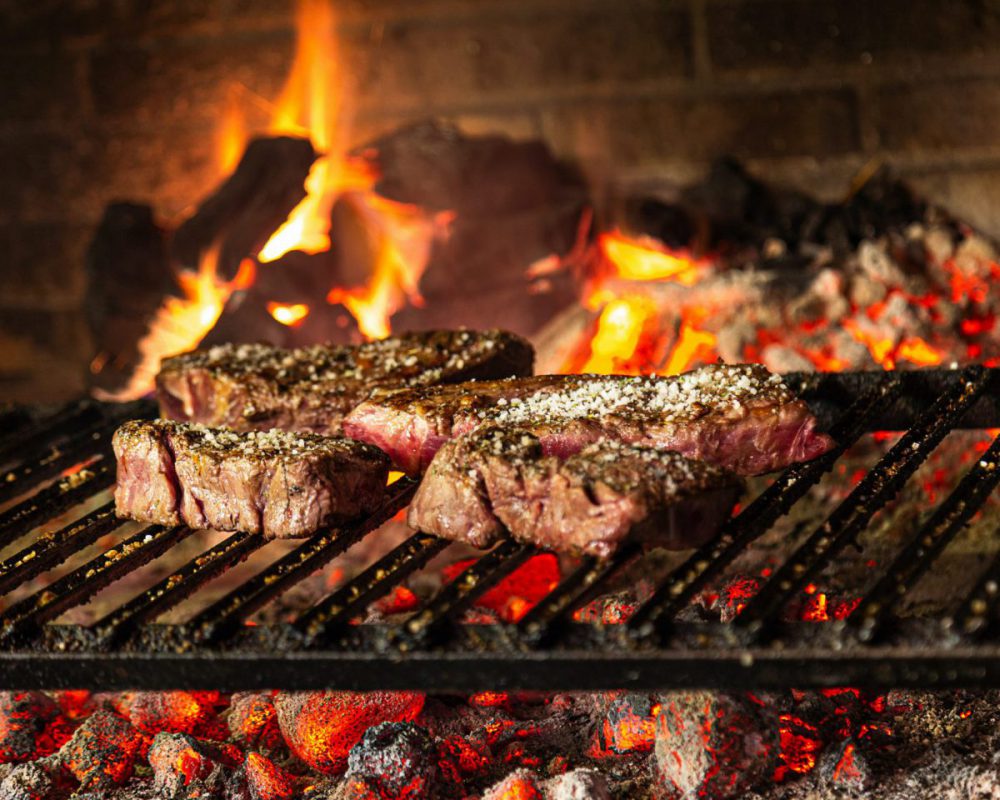How To Do Your Family Barbecue Japanese Style

The family barbecue is an important part of the Australian way of life. It just doesn’t feel like summer until you’ve fired up the barbie, cooked up some snaggers, and enjoyed a steak sanger.
A Japanese-style barbecue or yakiniku fits right into this time-honoured Australian tradition. It’s done outside, so you can still watch the backyard cricket. The grill is portable, so you can barbecue at home, at the beach, in the park, or anywhere else you like. Yakiniku is also meat-focused: just the way Aussies like it!
If your household is anything like mine, your family barbecue probably involves a lot of ‘back seat barbecuing’. One man wears the apron and holds the tongs, but every other male in the house will be hanging around the grill, beer in hand, offering criticism and advice.
“You should probably think about flipping those chops.”
“Those snaggers are going to be charcoal.”
“Shouldn’t you have put the steaks on by now?”
That’s why the greatest thing about a Japanese-style barbecue is that everyone gets their own set of tongs! You all gather around a table-top grill, cooking your own bite-sized pieces of meat or skewers just the way you like them.
Here’s what you need to know to do your next family barbecue Japanese-style.
The barbecue
To cook your Japanese barbecue, you’re going to need a tabletop charcoal grill called a Hibachi or Konro grill. This is a small, portable, charcoal-based grill that comes in various sizes to suit the size of your gathering.
Konro grills don’t create a lot of smoke and have excellent insulation, so your charcoal will burn for hours. The meat cooks just a few inches from the charcoal, so the dripping juices create a vapour that adds fantastic flavour.
For the tastiest Japanese barbecue experience, an Okunoto Konro grill is the way to go. It’s made in Japan using a diatomite from the Noto Peninsula. You’ll need to have a bit of extra cash because one of these beauties will set you back at least $350.
If you’re not up for that big of an investment, you can get a cheaper version for around $100 or duck into Barbecues Galore for a $6 disposable grill.
How to grill
For the best results, use your Japanese barbecue with Binchotan or white charcoal. Pile the charcoal on and around your barbecue fire starter or burning wood. Once it ignites, spread the charcoal out over the floor of the grill.
The grill has vents which help you to adjust the temperature. To increase the heat, open the vents to allow more oxygen into the grill. To reduce the heat, close the vents.
Yakiniku is not about cooking up the biggest steak. Instead, it’s focused on drawing out the natural flavours of the meat. You’ll need good quality meat, and you’ll have to be careful not to overcook it. The thinnest, marbled slices of beef might be cooked in less than 10 seconds!
The meat
You can cook pretty much any kind of meat, vegetables, or seafood on your Japanese barbecue. Here are some popular options:
Beef:
Of course, the best kind of meat for yakiniku is Wagyu beef. But, if your budget won’t stretch that far, any good quality beef will work.
Karubi (boneless short rib) is a fantastic cut for yakiniku, cooked in slices about 4mm thick. It’s tender, juicy, and highly marbled. For best results, cook each slice for around 10 seconds on one side and just a few seconds on the other.
Other common beef cuts for yakiniku include zabuton (chuck flap), ribeye, tomo bara (short plate), hireshita (sirloin), and hire (tenderloin). If you’re using tenderloin, you’ll need to cook it in relatively thick slices.
Pork:
Thin slices of pork belly are an excellent choice for yakiniku. Neck and cheek cuts are also a good choice.
Chicken:
If you prefer a leaner option, chicken skewers or yakitori make a tasty addition to any Japanese barbecue. Dice the chicken into 1-inch pieces, thread them on to a bamboo skewer, and get cooking!
Seafood:
Add an Australian flavour to your yakiniku with fresh shellfish, squid, or prawns.
Vegetables:
Your yakiniku will go well with any of the vegetables you usually throw on the barbie. Add corn, mushrooms, onions, potatoes, or anything else you like.
Yakiniku sauce
At a Japanese-style barbecue, you don’t marinate the meat. Instead, you cook it in strips and then dunk it in a special dipping sauce. This recipe will make around 250ml of yakiniku sauce. It should be enough to cover two or three barbecue sessions.
INGREDIENTS
- ⅓ cup shoyu (Japanese soy sauce)
- ¼ cup water
- 1 Tbsp vinegar
- ⅔ cup sugar
- 1 large clove garlic, crushed
- 2 Tbsp toasted sesame seeds
- 2 Tbsp mirin (rice wine)
METHOD:
1. Combine ingredients in a saucepan and bring to a gentle boil, stirring occasionally to dissolve the sugar.
2. Simmer gently for 5-10 minutes until the sauce just starts to thicken.
3. Store the sauce in the refrigerator until you’ve used it up. It will keep forever!
Now you’re ready to do your next family barbecue Japanese-style.
Enjoy!
